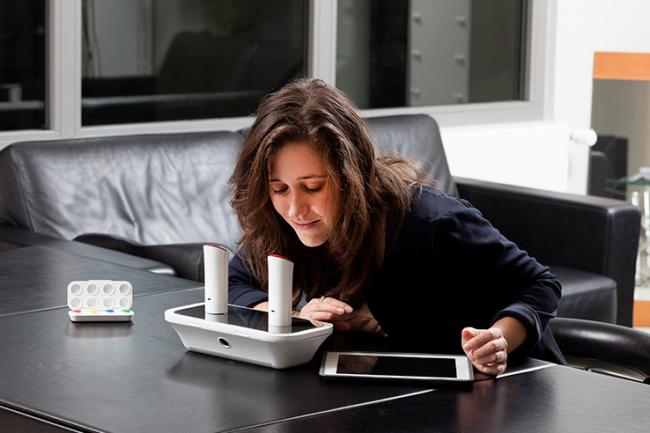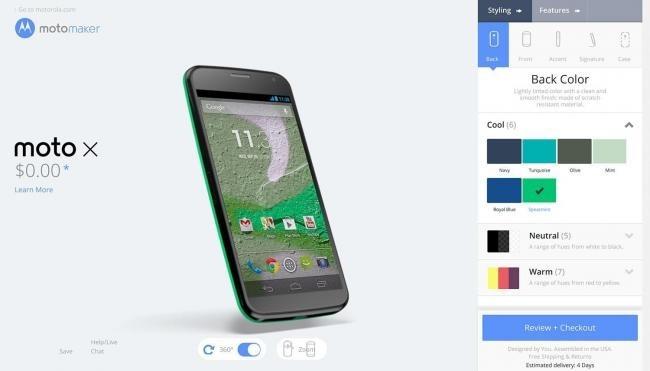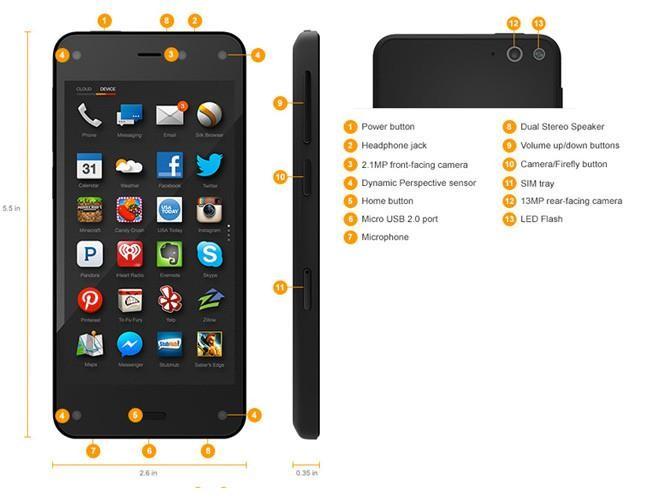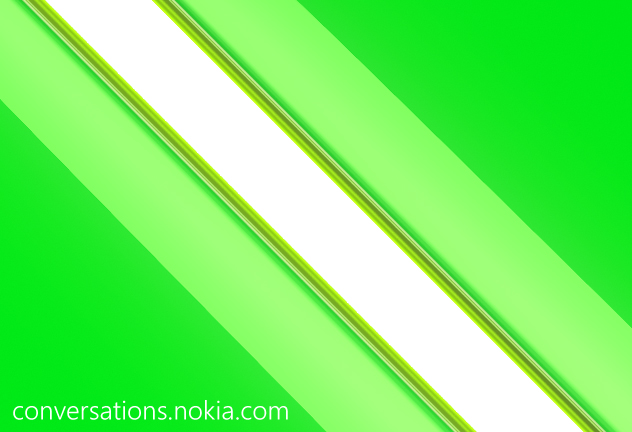Technological observatory June 16-21
This week, the NEO Blog technology observatory brings you the following stories:
- It's finally here: the Apple Store at Puerta del Sol opens June 21
- Tuenti Móvil goes international with its first overseas outing... to Mexico
- Amazon's Android software store tops 240,000 apps and games
- oPhone aims to become the scent messaging device for smartphones
- Moto Maker to reach Europe in July
- YouTube will block indie music labels that don't sign its new agreements
- Three figures that show that PC sales are taking off again
- Fire Phone: the lowdown on Amazon's first smartphone
- Apple to launch its smartwatch in October 2014, according to Reuters
- Google rolls out Android 4.4.4 KitKat to fix bugs in Nexus devices

Madrid can now put the date in its calendar: the Apple Store at Puerta del Sol is to open next Saturday June 21. There hasn't been an official press release, but the date has appeared on the wall of the store that was confirmed a few days ago, as shown in the photo published by Carlos Hergueta (@herguetic). The first official Apple store in the center of Madrid, it joins the outlets already to be found at various malls in the suburbs, like Majadahonda, Parquesur and Xanadú. And like the store on Passeig de Gràcia in Barcelona, it will no doubt become one of those places that are never empty. More pictures of the store are expected to emerge over the week along with details about it on the Apple Retail website, and at some point there's sure to be a press release.
The road traveled by Tuenti Móvil in Spain hasn't been exactly short. After a period in which access was by invitation only, the operator then opened up to any user. And it did so with a very tempting offer: the most economic giga on the market at just €7.26 a month, a price that has only recently been beaten. So the company has come a long way to top 200,000 customers and become one of the fastest-growing virtual network operators in terms of customer acquisition. Now, though, it's about to embark on a new adventure. This week Tuenti Móvil announced that it was going to start expanding into international markets, beginning with Mexico. Nearly two years ago Tuenti COO Sebas Muriel hinted that the operator, which grew out of the social media site, might expand to other countries and he pinpointed Latin America as the most logical market. Today, after this long wait, Tuenti Móvil confirmed that it was going to take the first step in this process and launch a beta version in Mexico. The Telefónica-owned virtual network operator hasn't announced the rates it's likely to offer, but the little it has said suggests that data will remain the prime focus. Young people will be the target audience and a range of services specially designed for this segment of the market will be offered, such as the "Zerolímites" functionality that lets you communicate through an app even if you've used up all your data allowance. Like we said, for now the Mexican service will be launched in beta phase only, but it nevertheless marks the first step in a more ambitious project. Tuenti sees Mexico as the gateway to Latin America and clearly intends to conquer more countries. There's certainly no shortage of candidates as Telefónica and its various brands already have a presence in countries like Argentina, Peru, Uruguay, Venezuela and Brazil.
Amazon has announced that its application store, Amazon Appstore, has tripled its catalog in the last 12 months and now offers more than 240,000 apps and games. With a presence in nearly 200 countries, the store’s apps are available for numerous devices. According to the online retailer, Amazon Coins, the virtual currency which lets users save money on Amazon apps and games, have become very popular and users have spent "hundreds of millions" in recent months. At the official announcement Amazon also reported how happy developers are with the store: 65% of those surveyed by the company say their revenue is just as good in Kindle Fire devices as in other platforms, and sometimes even higher. And that's in spite of the ambiguous market share for these devices.

We've seen all kinds of messaging apps for smartphones: texts, photos, videos, tunes... Even so, there are limits when it comes to sending certain types of information. For instance, how do you send a scent? Ok, it might sound like a sanitary napkin ad but someone seems to have come up with the answer. oPhone is, in the words of its creators, a vapor communication system. When connected to Bluetooth, the system can be used to send oNotes, a combination of 300,000 different aromas tagged with a photo that can be shared on the main social media sites. However, you will need the company's device to smell it. The way it works is simple: you write your text or take a photo then choose from between 32 scents and eight different notes, which according to the creators produce 300,000 aromas when mixed in different combinations and can be sent to another person. The project will start raising funds on Indiegogo. For the moment, it will only be available for iPhone and to publicize it the creators want to set up free points where you can test it out and see how it works. That said, it doesn't look like we are going to see one of those points anywhere close. David Edgard and Rachel Field, professors from Harvard University and the Wyss Institute, are the brains behind the technology. The Wyss Institute specializes in everything related to biology and technology. We'll have to wait and see whether the project secures the funds it needs and when it's likely to be available.

The Moto Maker service, which lets you customize the design of your Moto X before you purchase it, choosing from 4,000 different colors and details, will finally cross the pond and reach Europe—or Germany at least—in the coming weeks. Moto Maker will be available in Germany from July 1, though initially only through Phone House stores. Users will be able to customize the appearance of their Moto X on the Moto X website, which on completion of the process will issue a reference code to take to the store and purchase the customized Moto X. Moto Maker lets you select the device's internal memory, choose from between 30 protective cases in different colors and finishes, including bamboo, teak, walnut and ebony, two colors for the front (black or white), 10 colors for the metal details of the camera and buttons, add a signature on the case and customize the start-up image with a message, to name just some of the options available.
Global head of content at Youtube Robert Kyncl has announced a range of measures about to be introduced in Google's video service which directly affect indie labels as these could be blocked if they don't accept the new terms. The news came as something of a bombshell as it could marginalize a whole sector, which although independent and made up of labels that are quite modest in comparison to the big names, nevertheless accounts for more than 30% of the revenue from the music market. This is no small figure, but even so Youtube has confirmed that it will block videos from labels that don't sign licensing agreements for its new premium tier called YouTube Music Pass, which aims to charge users for watching and listening to music without ads and downloading songs to their mobile devices. The premium service launches this year and there don't appear to be any problems with the big music companies, only with independent artists. These could disappear from YouTube "in a matter of days" after the service confirmed that it was reducing the content from independent labels that have not subscribed to its upcoming music service. For the independent industry, this is a huge mistake by YouTube as it affects a significant part of the market and musicians of the stature of Adele, Arctic Monkeys and Jack White. What is abundantly clear is the importance of having a presence on a service like YouTube, with an estimated one billion viewers per month and with music its greatest market. The new premium service from YouTube will compete with Spotify, Deezer, Apple Beats Music and even its own Google Play Music All Access service, but this decision affecting indie labels highlights just what business means for YouTube: it is forcing those companies to try and compete with the big names, something which independent artists usually find difficult whatever the sphere.
With the economic crisis, the vibes from the PC market in 2013 were not very positive. Sales fell by 10% and the movements in the market appear to be confirming a post-PC era whose final outcome no one can predict at the moment but in which the candidates for king are already lining up. Microsoft has revealed that it will be focusing on its Surface concept, and all the major brands are looking for their own niche. But with the first half of 2014 practically over, there are three figures that show that the PC is back, at least as far as sales go, and will be here for a good while yet. A few days ago Intel announced its second-quarter financial results and they were more positive than they themselves had hoped: the American company experienced a slight growth in sales to 10 billion. The end of the Windows XP cycle may well have increased the number of upgrades, which Intel has obviously profited from. It expects to see continued growth in 2014, something which has not happened since 2011. The giant HP also mentioned the same figure when it announced its results for the last quarter. The company has confirmed that PC sales are up by 10% in comparison to last year and it predicts the stabilization of this segment in 2014, helped in particular by the professional market. Moody's gives a margin of between 12 and 18 months for continued equipment upgrades in the professional market, clearly leading to greater profits for companies. Lenovo has also noted the same trend. In an interview it remarked that the PC market has stopped falling, as corroborated in the latest results published by the Chinese company which show a 16% growth in laptop sales compared with last year, and a 14% growth in desktop PC sales.

After several years of rumors, Amazon's first smartphone is finally a reality. Jeff Bezos has presented the Fire Phone in society, a medium-to-high end cellphone with a rather expensive price tag which for the moment will only be available in the United States. Fire Phone, like Kindle Fire tablets, will come with Fire OS, a highly customized filtered fork of Android in which everything is perfectly integrated with the Amazon ecosystem, eliminating every trace of Google services. The Fire Phone has a 4.7-inch LCD screen with a resolution of 1280 x 720 pixels (315 dpi), a 2.2 GHz Qualcomm Snapdragon 800 processor, 2 GB of RAM and 32/64 GB of non-expandable internal memory. It boasts a good 13-megapixel rear-facing camera with a super-bright f2.0 aperture lens, optical image stabilization and flash that takes better pictures than the iPhone 5S and Samsung Galaxy S5, accompanied by a 2.1-megapixel front-facing camera. It also has stereo loudspeakers compatible with Dolby Digital Plus technology, a dedicated camera button, a single browser button (Home), four dynamic perspective sensors with invisible infrared illumination, gyroscope, accelerometer, magnetometer, barometer, proximity sensor and ambient light sensor. The connectivity specs are WiFi 802.11a/b/g/n/ac, Bluetooth 3.0, NFC and 4G LTE. The Amazon Fire Phone dimensions are 139.2 x 66.5 x 8.9 millimeters and it weighs 160 grams. In that size the 2.400 mAh battery promises 22 hours of talk time, up to 285 hours of standby, up to 11 hours of video playback, and up to 65 hours of audio playback. The dynamic perspective sensors are one of the key points of this terminal as they'll be capable of tracking your face with great precision to create 3D effects and you will be able to use gestures to control apps. For example, if you tilt the phone from side to side you'll be able to move from one page to another and look at the sides of 3D figures. The Amazon Fire Phone comes with all the Amazon services, including its music, books, movies, apps, games and services like Amazon Prime, its Mayday customer service, and a new service called Firefly which when you press the camera button lets you identify over 100 million products that you can then buy from the Amazon store in a few easy steps. Amazon Fire Phone can already be pre-ordered at Amazon.com, but only in the United States. The unlocked price starts at 649 dollars and AT&T will be the only US operator that will subsidize it, from 199 dollars for a two-year contract. It's not certain whether this cellphone will reach other countries.
The possibility that Apple might launch its own smartwatch on the market has been taken very seriously since this type of device became the latest trend in the consumer electronics world. An "iWatch" would be welcomed with open arms by iPhone, iPad and Mac users, and even users of other platforms, and it now looks like it might become a reality by the end of the year. Following months of rumors, Reuters now feels confident enough to insist that, come what may, Apple will unveil its smartwatch this coming October and that it is aiming to sell around 50 million in the first year—a fairly ambitious but nevertheless realistic figure. If it is released in October, Apple will have a very interesting third and fourth quarter, packed with launches and a renewed portfolio of mobile devices and computers, as well as introducing new products on the market. As has now become the tradition, the new iPhone is likely to be unveiled in September along with a new version of Apple's mobile device operating system, iOS 8 (presented at the recent WWDC 2014). October will see the launch of new iPads and new Mac computers (MacBook Air Retina at last?), and now it looks like a smartwatch as well, known unofficially as iWatch. If all of this proves to be the case, come December Apple will have a vast portfolio of new products, and we all know what that means for a technology company in the Christmas season.
This week Google published Android 4.4.4 KitKat for Nexus devices, and while there don't seem to be any interesting novelties, strangely enough it's only a couple of weeks since version 4.4.3 was launched. This is because the latest update comes with a patch for the known OpenSSL bug CVE-2014-0224, which lets intermediaries steal information from users. The new KitKat is already available for Nexus 4, 5, 7 and 10 and is likely to be phased in for other vulnerable devices.

In three days' time Nokia will release something green. That's the conclusion we've reached after examining the image and countdown on its Conversations website. Judging from the color chosen, it seems likely that the manufacturer is about to unveil a new Nokia X, an Android-based terminal to add to the range recently presented at the MWC. For the moment, though, this is mere speculation as we haven't found any clues to confirm our hunch. In fact, it might simply be the launch of new color for a model already on the market. Will we see a Nokia X2, or a new color for the current portfolio?
